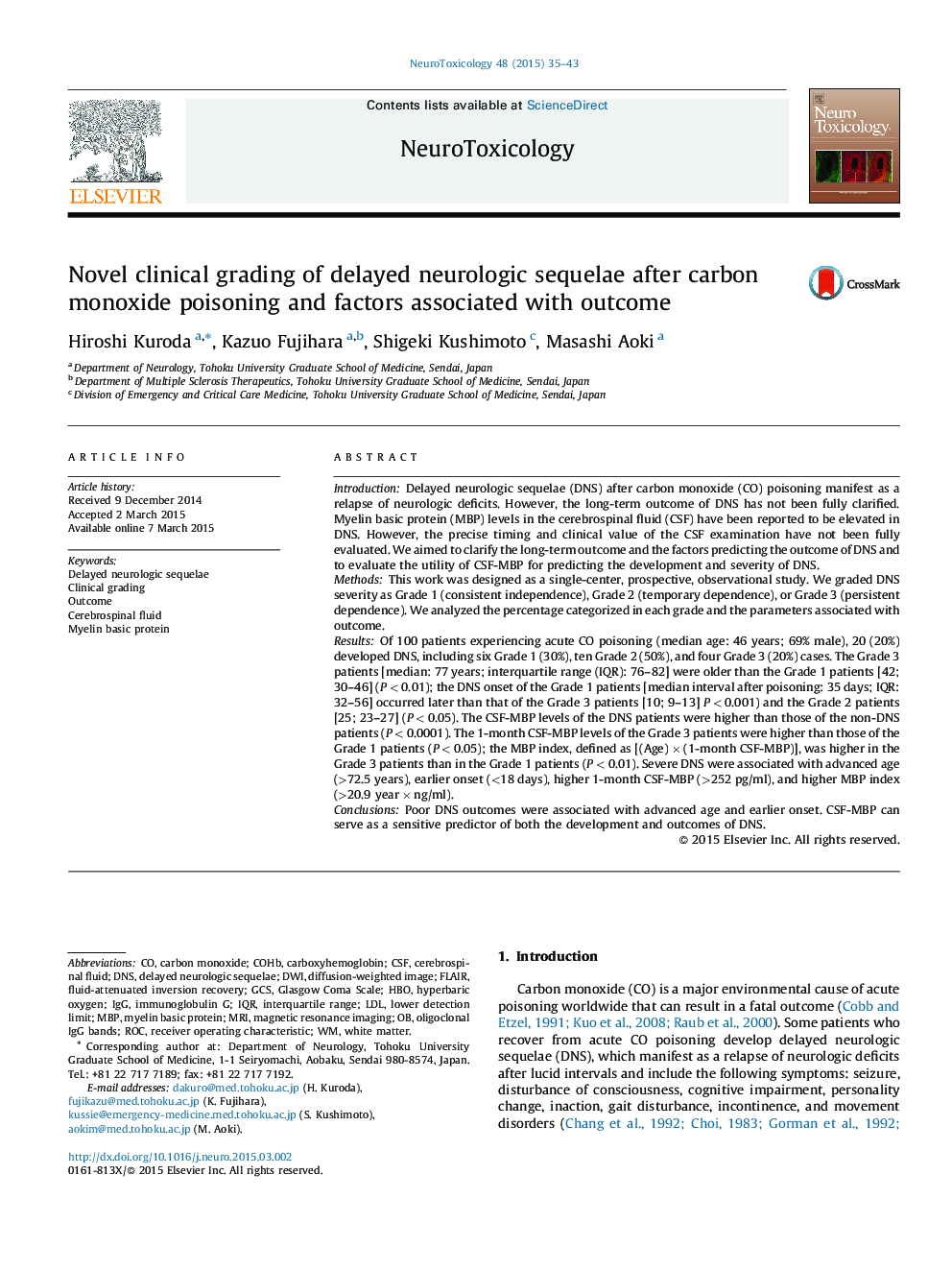| کد مقاله | کد نشریه | سال انتشار | مقاله انگلیسی | نسخه تمام متن |
|---|---|---|---|---|
| 2589515 | 1562046 | 2015 | 9 صفحه PDF | دانلود رایگان |
• A prospective, observational study of patients with acute carbon monoxide poisoning.
• Of 100 patients, 20 patients (20%) developed delayed neurologic sequelae (DNS).
• The DNS severity and percentage were mild (30%), moderate (50%), and severe (20%).
• Poor DNS outcome was associated with advanced age and earlier onset.
• The myelin basic protein can serve as a predictor for development and outcome of DNS.
IntroductionDelayed neurologic sequelae (DNS) after carbon monoxide (CO) poisoning manifest as a relapse of neurologic deficits. However, the long-term outcome of DNS has not been fully clarified. Myelin basic protein (MBP) levels in the cerebrospinal fluid (CSF) have been reported to be elevated in DNS. However, the precise timing and clinical value of the CSF examination have not been fully evaluated. We aimed to clarify the long-term outcome and the factors predicting the outcome of DNS and to evaluate the utility of CSF-MBP for predicting the development and severity of DNS.MethodsThis work was designed as a single-center, prospective, observational study. We graded DNS severity as Grade 1 (consistent independence), Grade 2 (temporary dependence), or Grade 3 (persistent dependence). We analyzed the percentage categorized in each grade and the parameters associated with outcome.ResultsOf 100 patients experiencing acute CO poisoning (median age: 46 years; 69% male), 20 (20%) developed DNS, including six Grade 1 (30%), ten Grade 2 (50%), and four Grade 3 (20%) cases. The Grade 3 patients [median: 77 years; interquartile range (IQR): 76–82] were older than the Grade 1 patients [42; 30–46] (P < 0.01); the DNS onset of the Grade 1 patients [median interval after poisoning: 35 days; IQR: 32–56] occurred later than that of the Grade 3 patients [10; 9–13] P < 0.001) and the Grade 2 patients [25; 23–27] (P < 0.05). The CSF-MBP levels of the DNS patients were higher than those of the non-DNS patients (P < 0.0001). The 1-month CSF-MBP levels of the Grade 3 patients were higher than those of the Grade 1 patients (P < 0.05); the MBP index, defined as [(Age) × (1-month CSF-MBP)], was higher in the Grade 3 patients than in the Grade 1 patients (P < 0.01). Severe DNS were associated with advanced age (>72.5 years), earlier onset (<18 days), higher 1-month CSF-MBP (>252 pg/ml), and higher MBP index (>20.9 year × ng/ml).ConclusionsPoor DNS outcomes were associated with advanced age and earlier onset. CSF-MBP can serve as a sensitive predictor of both the development and outcomes of DNS.
Journal: NeuroToxicology - Volume 48, May 2015, Pages 35–43
